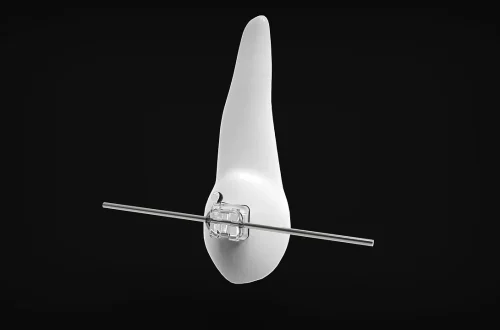
Understanding Oronasal Fistula in Dogs: Causes and Treatments
Understanding oronasal fistula in dogs is crucial for pet owners and veterinary professionals alike. This condition, characterized by an abnormal connection between the oral cavity and the nasal passages, can significantly impact a dog’s health and quality of life. It often arises from various underlying causes, including dental disease, trauma, or congenital defects. The presence of an oronasal fistula can lead to a range of complications, such as chronic nasal infections, difficulty eating, and severe discomfort.
Recognizing the symptoms early is vital for effective treatment. Dogs with this condition may exhibit signs such as nasal discharge, bad breath, coughing, or difficulty swallowing. The complexity of diagnosing oronasal fistulas requires a thorough examination by a veterinarian, who may employ imaging techniques to confirm the diagnosis and rule out other potential issues. Treatment often involves surgical intervention to repair the fistula, alongside addressing any underlying health problems.
Owners must be proactive in their approach, ensuring regular veterinary check-ups and maintaining their dog’s oral health. By understanding this condition, pet owners can advocate for their dogs and seek timely medical intervention, ultimately leading to better health outcomes. This article delves deeper into the causes, symptoms, and treatment options available for oronasal fistulas in dogs.
Causes of Oronasal Fistula in Dogs
Oronasal fistulas in dogs can result from a variety of causes, each contributing to the development of this uncomfortable condition. One of the most common culprits is dental disease, particularly periodontal disease. As dogs age, plaque and tartar can build up on their teeth, leading to infections that can erode the bone surrounding the teeth. When the bone is compromised, it may create a pathway between the mouth and nasal cavity, resulting in an oronasal fistula.
Trauma is another significant factor. Dogs are naturally curious and active, which can lead to injuries from accidents or rough play. A fractured jaw or severe facial injury can disrupt the normal anatomy of the mouth and nose, creating a fistula. Additionally, certain breeds with flat faces, such as Bulldogs and Pugs, may be more predisposed to this condition due to anatomical vulnerabilities.
Congenital defects also play a role in the occurrence of oronasal fistulas. Some puppies are born with anatomical abnormalities that predispose them to develop these fistulas as they grow. These issues may not be immediately apparent but can manifest later as the dog matures.
Infection is another factor that can contribute to the formation of oronasal fistulas. For instance, if a severe dental infection spreads to the surrounding tissues, it may lead to the erosion of the tissue that separates the mouth from the nasal cavity. This can create a direct link between the two areas, resulting in a fistula.
Finally, neoplasia or the presence of tumors in the mouth or nasal cavity can also lead to the development of oronasal fistulas. Tumors can invade and disrupt normal tissue architecture, creating an abnormal connection between the oral and nasal cavities.
Understanding the various causes of oronasal fistulas is essential for pet owners. By being aware of these factors, they can take preventive measures, such as maintaining good dental hygiene and providing a safe environment for their dogs, reducing the likelihood of trauma.
Symptoms to Watch For
Recognizing the symptoms of an oronasal fistula in dogs is crucial for early diagnosis and treatment. The signs can vary depending on the severity of the condition and the underlying cause. One of the most common symptoms is nasal discharge, which may be clear, cloudy, or even purulent. This discharge often results from the constant flow of oral bacteria into the nasal passages, leading to chronic infections.
Another key indicator is bad breath, or halitosis, which is often more pronounced in dogs with dental issues. The presence of an oronasal fistula allows bacteria from the mouth to enter the nasal cavity, contributing to unpleasant odors. Pet owners may notice that their dogs are more prone to coughing, sneezing, or gagging, particularly after eating or drinking.
Difficulty eating is another significant symptom. Dogs with oronasal fistulas may struggle to consume food or water due to discomfort or the risk of aspiration. They may exhibit a reluctance to eat, drop food from their mouths, or show signs of distress when trying to swallow. In some cases, they may even develop a preference for softer foods that are easier to manage.
Owners should also be vigilant for signs of respiratory distress. If a dog is having trouble breathing, wheezing, or appears lethargic, these could be signs of a more severe issue related to the fistula. Chronic infections resulting from the abnormal connection can lead to inflammation and swelling in the nasal passages, making it difficult for the dog to breathe normally.
In summary, pet owners should be proactive in observing their dogs for symptoms associated with oronasal fistulas. Early detection and intervention can significantly improve the prognosis and quality of life for affected dogs. If any of these symptoms are noted, it is essential to consult a veterinarian for a thorough evaluation.
Diagnosis and Treatment Options
Diagnosing an oronasal fistula involves a comprehensive approach that typically begins with a thorough physical examination by a veterinarian. The veterinarian will take a detailed history, noting any symptoms the dog has exhibited and potential underlying causes such as dental disease or trauma.
Imaging techniques, such as X-rays or CT scans, may be employed to visualize the extent of the problem. These imaging methods can help identify the presence of a fistula and assess any associated dental issues or infections. In some cases, a veterinarian might also perform a rhinoscopy, which allows for direct visualization of the nasal passages and can help confirm the diagnosis.
Once diagnosed, treatment options will vary depending on the severity of the condition and the underlying causes. Surgical intervention is often necessary to repair the fistula. The specific type of surgery will depend on the size and location of the fistula, as well as any other dental issues that may need to be addressed. The goal of surgery is to close the abnormal connection between the mouth and nasal cavity, restoring normal anatomy and function.
Post-operative care is crucial for recovery. This may include a special diet, pain management, and antibiotics to prevent infection. Regular follow-up visits will be necessary to monitor healing and ensure that the fistula does not recur.
In addition to surgical options, addressing any underlying dental disease is imperative. This may involve professional dental cleanings, extractions of affected teeth, or other dental treatments to promote oral health and prevent future complications.
In conclusion, the diagnosis and treatment of oronasal fistulas require a collaborative approach between pet owners and veterinary professionals. Understanding the diagnosis process and available treatments can empower pet owners to make informed decisions about their dogs’ health.
**Disclaimer:** This article is for informational purposes only and does not constitute medical advice. For any health concerns regarding your pet, please consult a qualified veterinarian.




